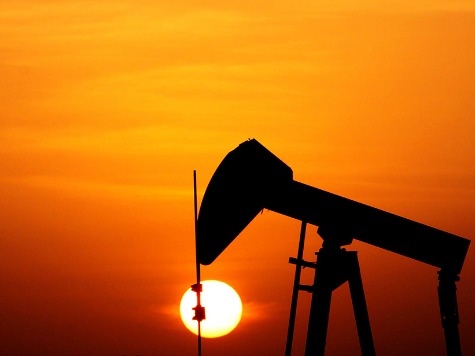
The United States Energy Information Administration (EIA) said American crude oil stockpiles rose 3.5 million barrels to 397.7 million barrels last week, the highest level since the 1930s.
With the United States now producing over 8 million barrels per day (MBD) and receiving over 3.3 MBD from Canada, Organization of Petroleum Exporting Countries (OPEC) exports to the U.S. since 2008 have been cut in half to about 3 MBD.
With the U.S. and Canada expected to grow production by another 2.4 MBD in the next two years, Ian Bremmer, President of Eurasia Group, says one of the “top risks” of 2014 is that oil prices could “crater” and OPEC could “fall apart.”
The Eurasia Group is the world’s largest political risk consultancy ,with 150 full-time employees and offices in New York, Washington, D.C., London, and Tokyo. The company also employs a network of 500 experts in 90 countries in Asia, Latin America, Europe and Eurasia, the Middle East, and Africa. Each year they produce the Eurasia Group Global Political Risk Index (GPRI) – the first qualitative comparative political and economic risk index designed specifically to measure stability in emerging markets.
One of GRPI’s 2014 “top risks” is that a serious decline in energy prices could lead to “expanding unrest” in the Middle East. Bremmer sees better than 50% odds there will be a comprehensive deal over Iran’s nuclear program that will allow Iran to double oil production. Given predictions that the U.S. oil boom will continue to accelerate, Bremmer forecasts, “then oil prices are cratering through [the] $80” level Saudi Arabia has set as OPEC’s presumptive floor. According to Bremmer, “OPEC falls apart in that environment.” He adds, “The Middle East as a whole becomes more fragmented [and] more violent,” and the region “becomes less of an investment destination and starts to affect even those countries we thought of as relatively stable, like Saudi Arabia.”
Higher risk factors in the Middle East explain why North America has become the prime location for energy exploration and production (E&P) investment in 2014. According to Barclays Bank’s annual forecast, “Global E&P spending is poised to reach a new record of $723 billion in 2014, up 6.1% from $682bn in 2013. 2014 should mark an acceleration of growth in North America to over 7% (led by the U.S.).” Barclays expects North America to capture $200 billion or 28% of all E&P spending; about 22% will go to the U.S. and 6% to Canada.
Oil production in the United States rose by a record 992,000 barrels a day in 2013, according to the International Energy Agency. “We keep raising our forecasts, and we keep underestimating production,” said Lejla Alic, a Paris-based analyst with the agency. The U.S. production averaged 7.5 MBD, but was running over 8 MBD in both November and December. Despite drilling reductions on federal land, higher private investment may push the domestic production run rate to 9 MBD by the end of the year.
One of the best surprises is that the growth of U.S. crude oil inventory has been mainly in low-density and low-sulfur content crude oil from shale fields, known as “light, sweet crude oil.” Many refineries along the Gulf Coast of the United States were designed to run most efficiently on cheaper, heavy, sour barrels imported from OPEC founding member Venezuela that contain dangerously high levels of sulfur pollutants.
As Gulf refineries have been switching over to less-polluting domestic oil, Venezuelan crude oil exports to the U.S. are approaching 29-year lows. Venezuelan crude and petroleum product shipments to the U.S. averaged 792,000 barrels a day in the first eleven months of 2013, “the lowest annual export rate since 1985, according to data published… on the U.S. Energy Information Administration’s website.”
Whatever happens to OPEC this year, the record-high level of domestic crude oil inventory will insulate the United States from the Middle East’s geopolitical risks. “This paints a secure supply picture for the U.S.,” said Stephen Schork, President of Schork Consulting Group Inc. “Whatever issues arise, it’s important to remember you would rather deal with the problems of a supply glut rather than a dearth.”
The author welcomes feedback and will respond to comments by readers.

COMMENTS
Please let us know if you're having issues with commenting.